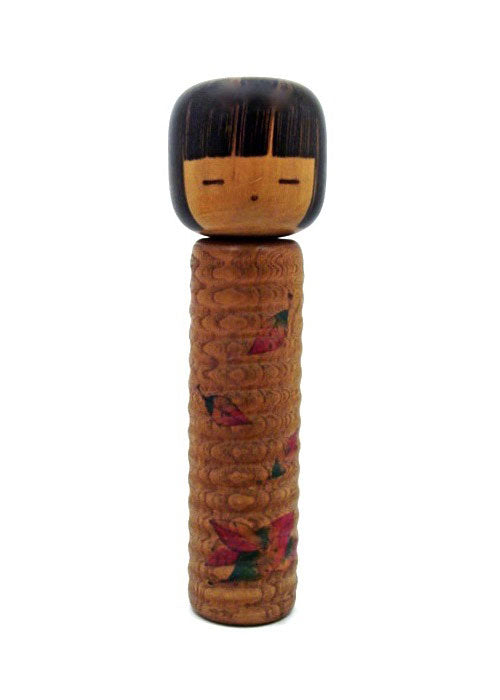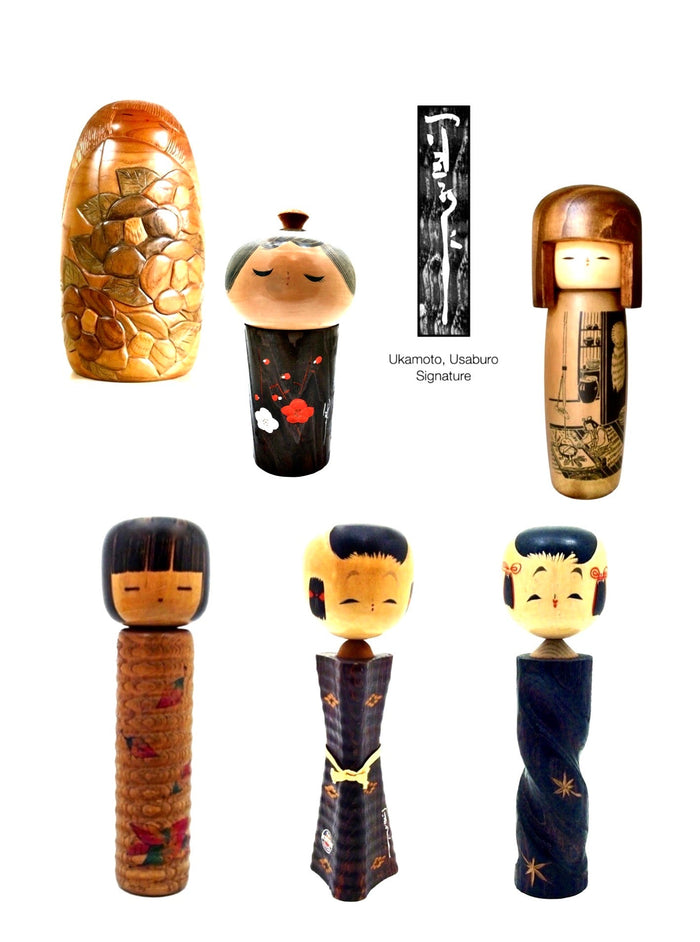
"Saisyu" | Autumn Leaves
Dimensions: 14-0” h
The lathe-turning and ribbing of the natural wood give a depth and textural quality to this Kokeshi. Autumn is represented by multi-colored falling leaves, and signals the coming of winter. The hair, eyes and nose are a signature of Okamoto-san, There is a paper stamp on the bottom of the piece.
Vintage Condition: Excellent “as is” and retains the original craft/workmanship. Any discoloration, chipping/cracking, surface wear or structural damage noted.

Artisan
Woodworker: Okamoto, Usaburo
1917-2009
Biographical History:
Okamoto-san was born in Shinto Village, Gunma Prefecture in 1917. Usaburo was the patriarch of the most prolific family of Modern Kokeshi doll manufacturing and began creating Sosaku dolls in 1950. He developed a technique of carving and baking to prevent wood from cracking and established the prototype for the Usaburo Kokeshi doll's introduction into the Kokeshi world. Winner of many awards, including the Prime Minister’s Award, his early dolls were mostly hand-carved/painted on the wheel and one which was cherished was his Kokeshi Container for personal items in which the head being a separate element formed the top of the cylindrical container. His masterpiece, “Kantsubaki (Camellia in the Winter)”, featured his favorite camellia flower on a beautiful zelkova for the bodies and Mizuki which was purchased by Emperor Showa. He established a museum in Gunma and passed away at the age of 91, and his sons, daughters, and extended family have currently been creating what is called “character” dolls, souvenirs decorations, and children’s toys.
Collector's note – descriptive qualities, standard characteristics & ornamentation styles:
Some of Okamoto’s lathe-turned dolls typically incorporate ribbing of the natural wood to give depth and textural quality. Many doll heads are traditional in appearance and painterly in execution. He is also known to twist the form of the body for interest. He incorporates many seasonal motifs such as cherry blossoms, falling leaves, wheat, persimmons, and the crane and dragonfly, (tonbo).
Explore & Learn More about Woodworker: Okamoto, Usaburo